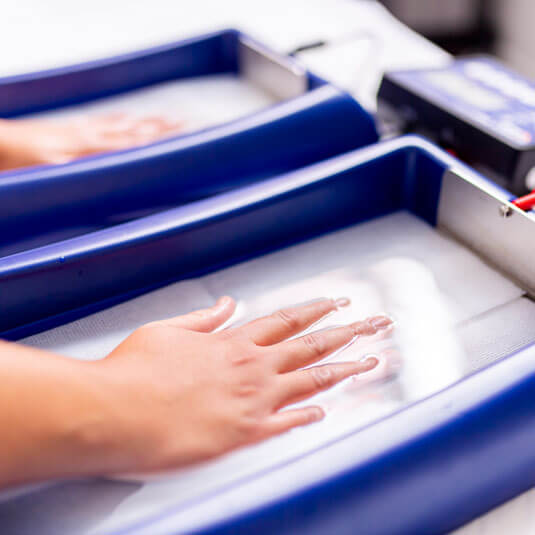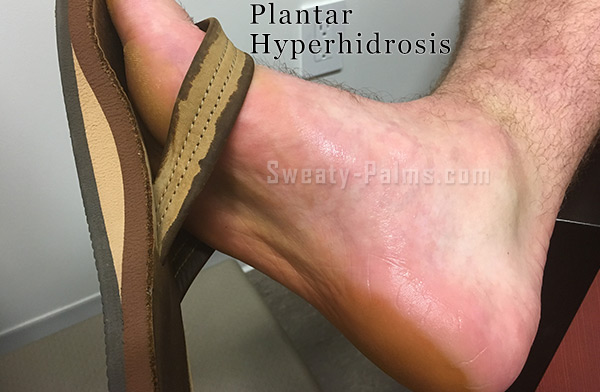Revealing the Intricacies of Excessive Sweating: A Comprehensive Guide to Medical Diagnosis and Management
Excessive sweating, clinically recognized as hyperhidrosis, is a condition that impacts a considerable number of individuals and can have a profound impact on their top quality of life. While sweating is an all-natural physical feature, its overactivity in hyperhidrosis provides a special set of difficulties that typically go beyond mere pain.

Understanding Hyperhidrosis Causes
Hyperhidrosis triggers can be credited to various elements such as genetics, hormonal inequalities, and particular medical conditions. Genetics play a considerable function in primary focal hyperhidrosis, where people acquire the condition from their member of the family. This sort of hyperhidrosis often shows up in particular areas like the hands, soles of the feet, underarms, and face. Hormonal imbalances, specifically an over active thyroid gland or menopausal modifications, can also cause extreme sweating. Furthermore, specific medical problems such as diabetic issues, heart disease, and infections can bring about second generalised hyperhidrosis. These underlying health concerns can interrupt the body's natural air conditioning system, triggering the sweat glands to come to be overactive. Recognizing the root creates of hyperhidrosis is vital in identifying and properly managing this problem. By determining the particular variables contributing to too much sweating, doctor can tailor therapy strategies to deal with the underlying reason, providing relief and boosting the lifestyle for people impacted by hyperhidrosis.
Recognizing Hyperhidrosis Symptoms

Furthermore, hyperhidrosis signs and symptoms might materialize in emotional and social distress, as people may really feel embarrassed or distressed about their sweating, leading to evasion of social scenarios (Treatment for hyperhydrosis of hands). In addition, repeated episodes of too much sweating can lead to skin maceration, fungal infections, and a general decrease in self-worth
Diagnostic Refine for Hyperhidrosis
Initiating the analysis procedure for too much sweating involves thorough examination of the individual's case history and checkup. Asking about the onset, period, and sets off of sweating episodes is crucial to set apart between key focal hyperhidrosis and additional generalised hyperhidrosis. Medical background ought to additionally include concerns about medicines, clinical conditions, and family members history of hyperhidrosis.
During the physical exam, specific attention is paid to the locations affected by sweating. The health care provider may analyze the level of sweating, look for signs of underlying problems, and review the impact of sweating on the person's lifestyle. Additionally, specific examinations like the gravimetric test, starch-iodine test, or skin conductance dimensions might be conducted to measure the quantity of sweat produced.
Additionally, in situations where additional hyperhidrosis is presumed, additional tests such as blood tests, pee examinations, and imaging studies may be recommended to recognize the underlying root cause of extreme sweating. The diagnostic procedure intends to accurately establish the kind and reason for hyperhidrosis to guide appropriate management strategies.
Therapy Choices for Hyperhidrosis
When addressing excessive sweating, numerous therapy alternatives are readily available to alleviate signs and boost the person's high quality of life. The treatment approach for hyperhidrosis depends on the intensity of signs and the person's action to preliminary therapies.
Topical therapies, such as aluminum-based antiperspirants, are usually advised as the very first line of defense for taking care of moderate cases of hyperhidrosis. These items function by plugging the sweat air ducts, therefore reducing the amount of sweat index that gets to the skin's surface. For people with a lot more severe signs and symptoms, oral medications like anticholinergics might be recommended to aid reduce sweating. These drugs can have side effects and are not ideal for everyone.

Effective Management Techniques
To successfully take care of hyperhidrosis, a detailed and customized treatment strategy customized to the client's particular requirements and reaction to previous therapies is important. This plan may site here incorporate a mix look here of healing techniques, including lifestyle modifications, topical therapies, dental medicines, botulinum toxin injections, iontophoresis, and in severe cases, medical treatments like sweat gland removal or sympathectomy. Way of living adjustments such as using moisture-wicking clothing, using antiperspirants, and exercising stress-reducing methods can complement clinical interventions. Topical antiperspirants containing light weight aluminum chloride are usually the first-line therapy, with stronger solutions available for resistant instances. Oral medications like anticholinergics might be recommended for generalised hyperhidrosis. Botulinum toxin shots work for focal hyperhidrosis, providing short-lived relief by obstructing the launch of acetylcholine. Iontophoresis, entailing using a reduced electric existing to decrease gland activity, can be advantageous for both palmoplantar and axillary hyperhidrosis. Surgical alternatives are normally reserved for extreme, refractory cases and require cautious consideration of advantages and risks. A multidisciplinary method involving skin specialists, primary treatment physicians, and, if needed, doctors, can optimize the administration of hyperhidrosis.
Final Thought
In final thought, hyperhidrosis is a condition characterized by excessive sweating, which can substantially impact a person's high quality of life. With appropriate diagnosis and management approaches, individuals enduring from hyperhidrosis can locate alleviation and improve their general well-being.
Extreme sweating, medically recognized as hyperhidrosis, is a problem that affects a significant number of people and can have an extensive effect on their high quality of life. By determining the details aspects contributing to extreme sweating, medical care carriers can customize therapy plans to resolve the underlying reason, offering alleviation and enhancing the quality of life for people affected by hyperhidrosis.
Hyperhidrosis, characterized by extreme sweating beyond what is necessary for managing body temperature, can dramatically affect an individual's high quality of life. Inquiring concerning the onset, period, and triggers of sweating episodes is important to differentiate between primary focal hyperhidrosis and additional generalised hyperhidrosis. Exessive Sweating.In final thought, hyperhidrosis is a condition defined by excessive sweating, which can considerably influence an individual's high quality of life